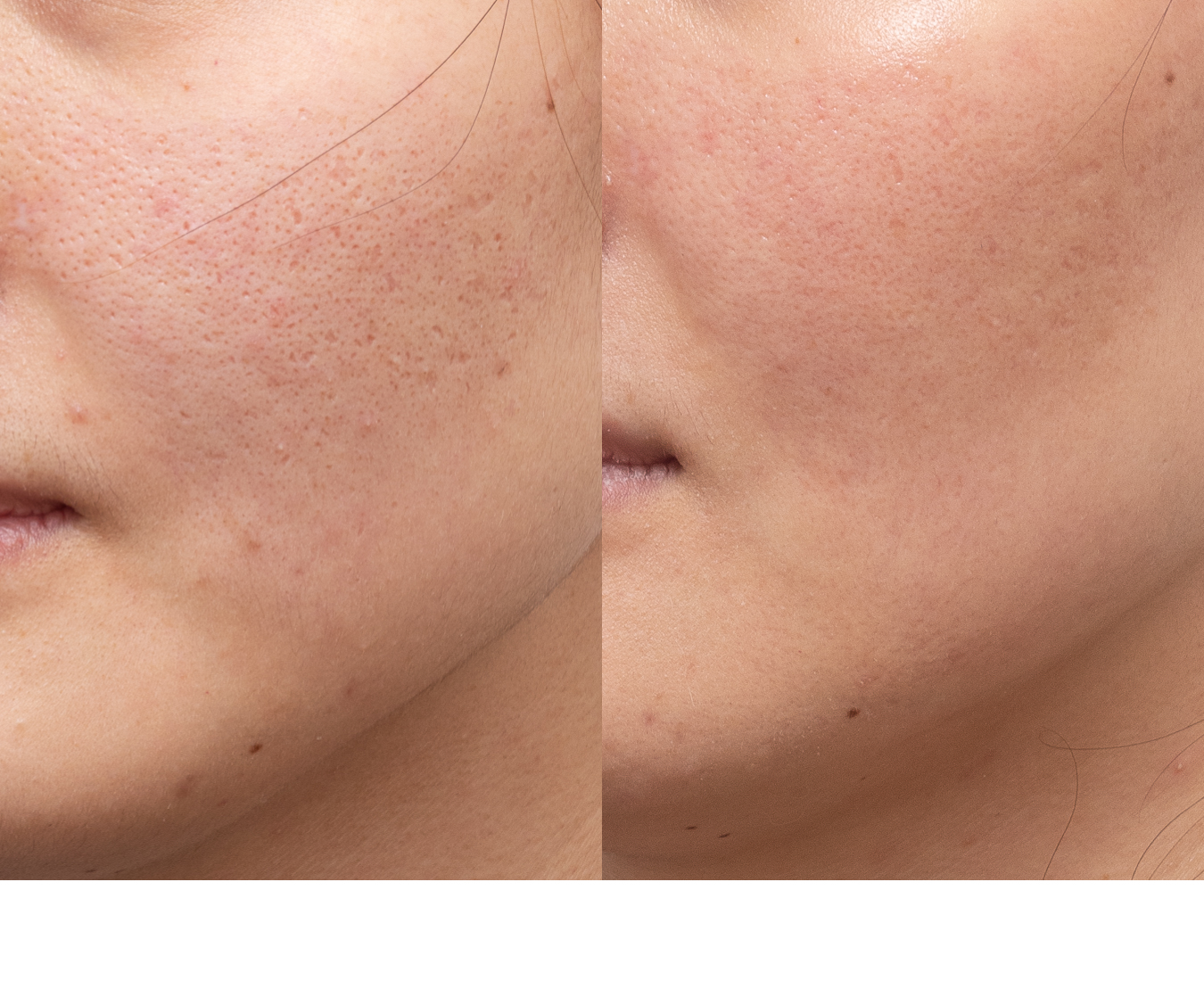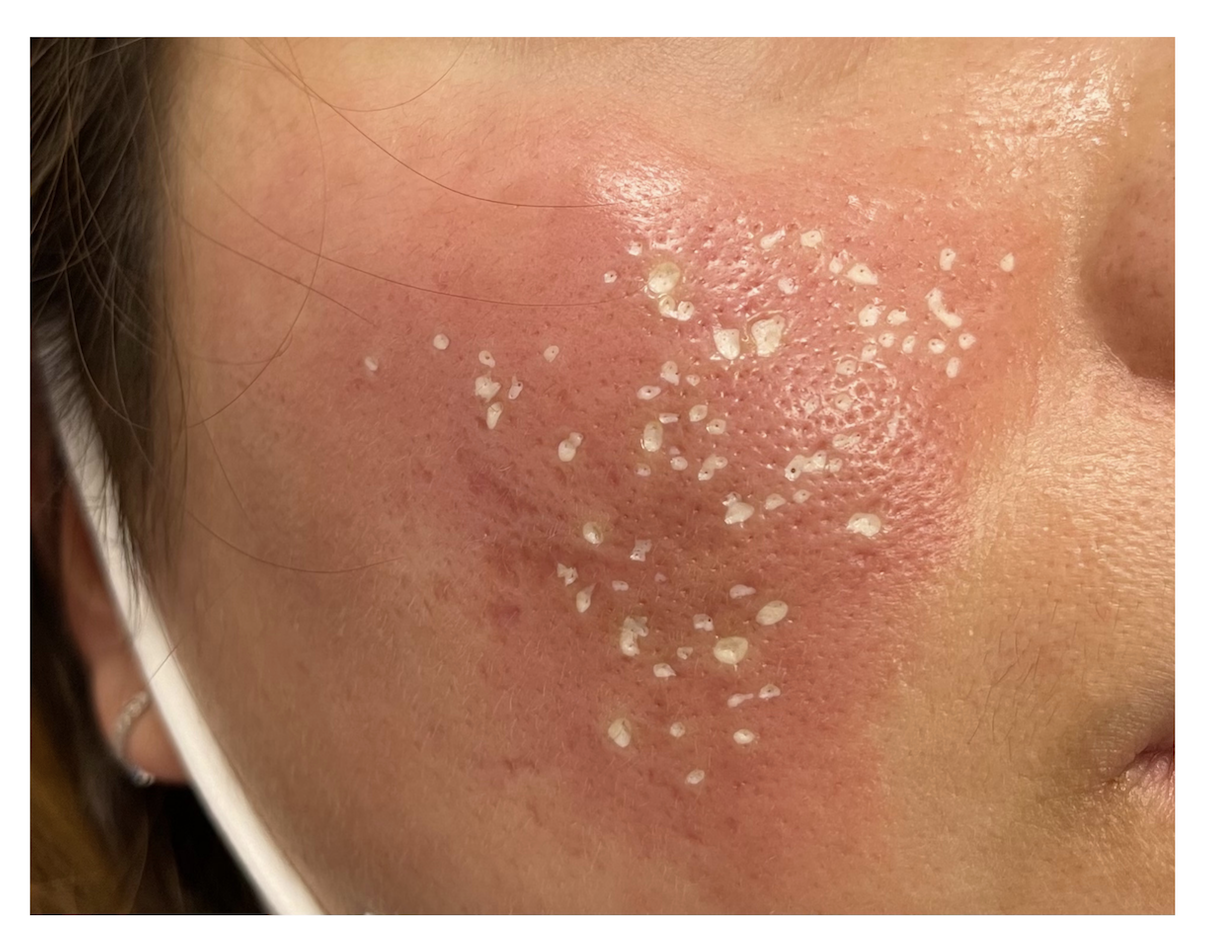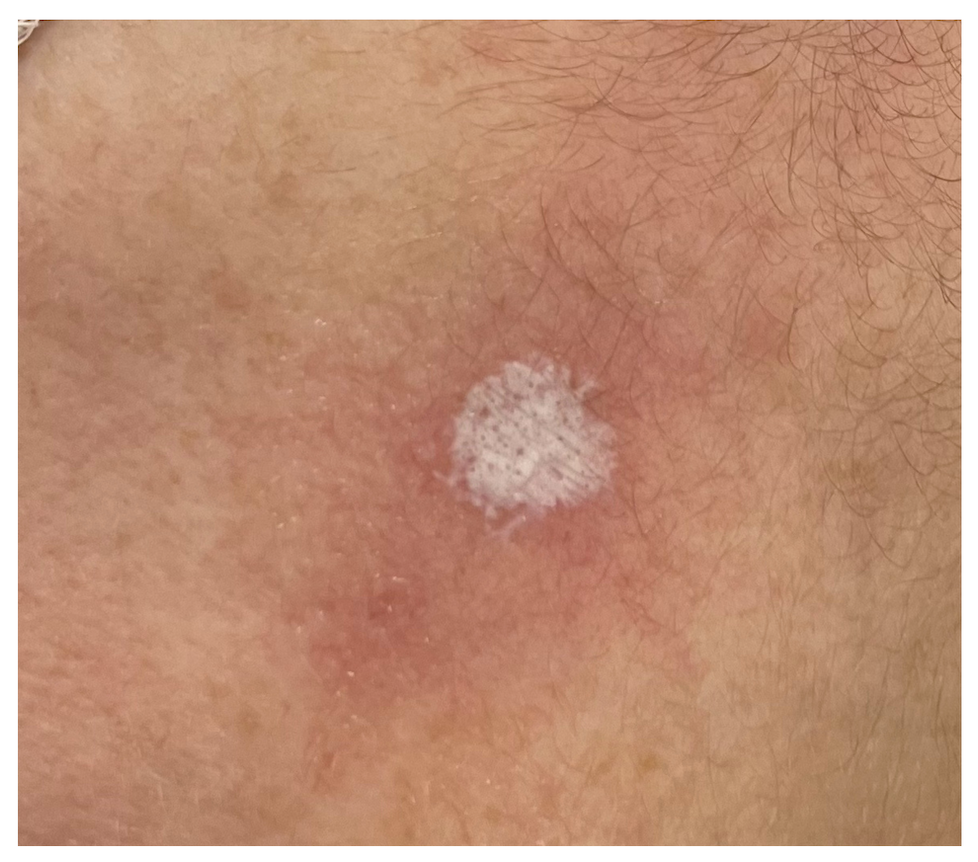
TCA CROSS
What Is TCA CROSS Treatment?
TCA CROSS stands for ‘TriChloroacetic Acid Chemical Reconstruction Of Skin Scars’. It is our treatment of choice for ice pick acne scars and large deep pores.
B and A after 3 session of TCA CROSS and skin resurfacing with RF and 1 session of low density CO2 laser resurfacing

Before and after photos of a patient who had 3 treatment with TCA CROSS + nanofractional RF resurfacing for acne scars (in combination of oral medication to control acne)

How Does TCA CROSS Work for Large Pores And Ice Pick Acne Scars?
TCA works by creating a chemical reaction that leads to the formation of new collagen fibres that increase the height of the treated scars/pores. Each TCA procedure can increase the height of an deep scar or open pore by 20-40 percent. For optimal results, most patients need two to four procedures.
How Is TCA CROSS Performed?
The TCA CROSS procedure involves depositing small amounts of TCA directly into the affected areas. After cleansing your skin, your dermatologist will apply the TCA applicator to the base of a scar or pore. The applicator is left in place until the surface of the skin in the treated area turns white (‘frosting’). The process is then repeated as appropriate to treat each remaining scar or pore individually. On completion of the procedure, a topical emollient is applied to soothe the skin. TCA CROSS only treats the scar or pore and spares the surrounding skin.
Is TCA CROSS Painful?
TCA CROSS is slightly uncomfortable but it is not painful. The procedure can be likened to the sensation of nettle stings or small ant bites, and is over within minutes.
What Is Recovery Like After TCA CROSS?
Frosting of a treated pore/scar will continue for up to 12 hours following a TCA CROSS procedure. The surrounding skin will be red for three to four days. Several days after treatment, a small scab will develop and shed. Do not pick at the scab; a llow it to fall off naturally and let the healing process proceed at its own pace. Full recovery from a TCA CROSS procedure is expected within five to seven days. We recommend applying a hydrating emollient and strict sun protection during the recovery period.
White frosting seen here immediately after a TCA CROSS treatment

White frosting seen here immediately after a focal TCA Peel

I Have Darker Skin – Can I Have TCA CROSS Treatment?
All skin types can be treated safely with TCA CROSS. However, the risk of hyperpigmentation after treatment increases for individuals with darker skin. This means the treated areas may be darker than the surrounding skin for weeks to months. Use of sunscreen and a pigment inhibiting cream (pre- and post-procedure) can reduce this incidence. Your specialist will explain all risks and possible complications associated with TCA CROSS treatment after examining your skin type.
Send us a message
Contact Us
Hours of Operation
Monday - Friday, 9am-5pm
Phone Number
Fax Number
Emails
Medical Enquiries:
reception@northsidedermatology.com.auLaser & Cosmetic Enquiries:
cosmetic@northsidedermatology.com.au